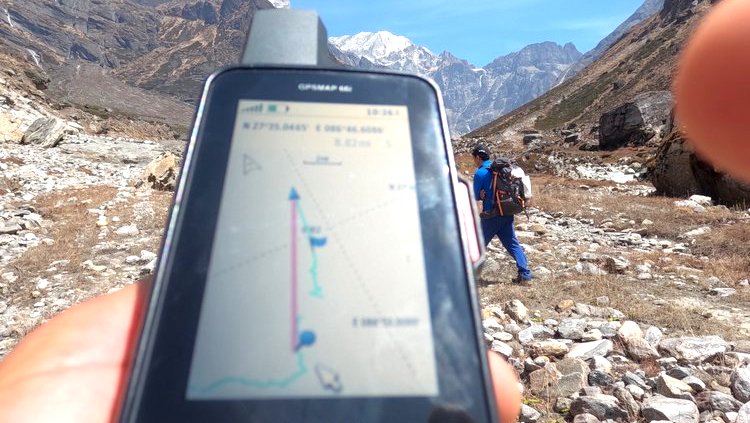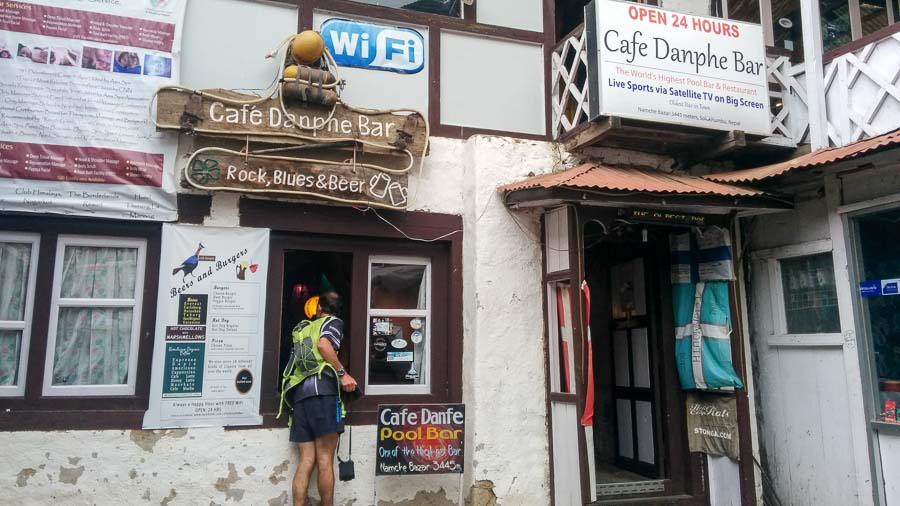Embarking on a trek in the Everest region is an experience filled with breathtaking landscapes and challenging terrains. Effective communication is key to ensuring a safe and enjoyable journey. Understanding the mobile network availability, utilizing satellite phones, accessing internet services and Wi-Fi, purchasing and using local SIM cards, being aware of emergency communication options, managing the charging of electronic devices, and adhering to best practices in remote areas are all crucial aspects. Crafted by Luxury Holidays Nepal Pvt. Ltd., delves into these essential communication strategies to enhance your trekking experience in the majestic Everest region.
We pride ourselves on being the premier choice for trekkers seeking reliable and comprehensive communication solutions during their Everest Region Trekking. Our deep understanding of the region's unique communication challenges, combined with our state-of-the-art equipment and knowledgeable team, ensures that our clients stay connected and safe throughout their journey. From facilitating seamless mobile network access to providing advanced satellite phones, and ensuring the availability of internet and Wi-Fi in remote trekking areas, we go the extra mile. Additionally, our expertise in managing local SIM card usage, offering robust walkie-talkie systems for group communication, and ensuring reliable emergency communication options sets us apart. We understand the importance of staying in touch and being prepared for any situation, making us the best company to trust for your communication needs during your Everest region trek.
Mobile Network Availability
When trekking in the Everest Region, understanding the mobile network availability is crucial for both safety and convenience. Here's an overview:
-
Coverage Variability: Mobile network coverage in the Everest Region is variable and largely dependent on the altitude and specific location. Lower regions, like Lukla and Namche Bazaar, generally have better network coverage compared to higher altitudes.
-
Primary Mobile Operators: In Nepal, the main mobile network operators are Nepal Telecom (NTC) and Ncell. These providers offer the widest coverage in the Everest Region. Their services include voice calls, SMS, and data.
-
Connectivity at Higher Altitudes: As trekkers ascend towards higher elevations, such as towards Everest Base Camp, the network connectivity becomes increasingly sporadic. At some of the highest points, mobile coverage can be very limited or non-existent.
-
Prepaid SIM Cards: Trekkers often opt to purchase local prepaid SIM cards from NTC or Ncell for better connectivity and more affordable rates. These can be bought in Kathmandu or other major cities before starting the trek. A passport and a passport-sized photo are typically required for registration.
-
Network Quality: The quality of the network, including call clarity and internet speed, tends to decrease with altitude. While voice calls might still be possible in many areas, internet connectivity can be slow and unreliable.
-
Roaming Services: For international trekkers, using roaming services on a foreign SIM can be very expensive. It's usually more cost-effective to use a local SIM card.
-
Advice for Trekkers: Trekkers are advised to communicate their plans and updates during periods of good connectivity, typically in lower regions. It’s also wise to inform close contacts about the expected periods of unavailability due to network issues in higher altitudes.
-
Alternative Communication Methods: Considering the limitations in mobile network coverage, trekkers are often advised to have alternative communication methods, such as satellite phones or walkie-talkies, especially for remote areas and emergencies.
Being aware of the mobile network availability and preparing accordingly can significantly enhance the safety and experience of trekking in the Everest Region.
Satellite Phones
Satellite phones play a vital role in communication during Everest Region Trekking, especially in areas where conventional mobile networks are unreliable or nonexistent. Here's an overview of how satellite phones are used in this context:


-
Availability: In recent years, the availability of internet services and Wi-Fi in the Everest region has significantly improved. Many lodges, tea houses, and even some campsites offer Wi-Fi access, although it's more common in lower altitude areas like Lukla and Namche Bazaar.
-
Quality and Speed: The quality and speed of internet connections can vary greatly. In lower regions, you might find relatively fast and stable connections, but as you ascend, the quality and speed may decrease. High-altitude areas, especially near Everest Base Camp, often have slower and less reliable connections.
-
Cost: Access to Wi-Fi in the Everest Region is often not free. Many lodges and tea houses charge a fee, which can vary from place to place. The charges may be based on time used or data consumed. It's advisable to inquire about the cost beforehand.
-
Satellite Internet: In the more remote and higher altitude areas, some lodges and expedition teams rely on satellite internet. While this ensures connectivity, it's generally slower and more expensive than Wi-Fi provided through local networks.
-
Mobile Data: Using mobile data can be an alternative in areas with cellular coverage. Local SIM cards from NTC or Ncell offer data packages that might work in some parts of the trek, although connectivity can be patchy as you go higher.
-
Usage: Internet access is primarily used by trekkers to stay in touch with family and friends, update social media, check weather forecasts, and sometimes for work-related purposes. It's also used by trekking agencies and guides for operational and safety communications.
-
Expectation Management: Trekkers should manage their expectations regarding internet availability and quality. High-altitude, remote locations will not offer the same level of service found in urban areas. It’s part of the experience of being in such an isolated and pristine environment.
-
Power Availability: The ability to use internet services is also contingent on the ability to charge devices. Power sources may be limited, and charging facilities at lodges might incur additional costs.
-
Alternative Options: For those needing more consistent internet access, carrying a satellite modem can be an option, though it's expensive and typically more relevant for professional or emergency use.
While Internet Services and Wi-Fi are available to a certain extent in the Everest Region, they come with limitations in terms of availability, speed, and cost, especially as one trek higher. Trekkers should prepare for intermittent connectivity and embrace the opportunity to disconnect and immerse themselves in the natural beauty of the Himalayas.
Charging Facilities
Charging facilities for electronic devices during Everest Region Trekking are an important consideration, as they impact both communication and the overall trekking experience. Here's an overview of the charging options and considerations in this region:
-
Availability at Lodges and Tea Houses: Most lodges and tea houses in the Everest region offer charging facilities for electronic devices like smartphones, cameras, and power banks. However, availability and efficiency can vary depending on the altitude and the specific establishment.
-
Cost for Charging: Charging devices at lodges and tea houses usually come with a fee. This fee can vary from place to place and is often higher in more remote or higher-altitude locations.
-
Solar Chargers: Due to the varying availability of electrical charging facilities, many trekkers opt to bring solar chargers. These portable devices are a sustainable way to keep electronics charged, especially in sunny conditions prevalent in the Himalayas.
-
Power Banks: Carrying a fully charged high-capacity power bank is a common practice among trekkers. It provides a reliable source of power for charging devices when electrical sources are not available or are costly.
-
Voltage and Plug Types: Nepal generally uses 220-240 volts with a frequency of 50 Hz. The common plug types are types C, D, and M. Trekkers should bring appropriate adapters for their devices.
-
Limited Availability in High Altitudes: As you trek higher, the availability of charging facilities decreases. In very high-altitude locations, such as around Everest Base Camp, charging options may be very limited or non-existent.
-
Prioritizing Device Charging: Since charging opportunities can be limited, trekkers should prioritize which devices need to be charged first, usually devices necessary for communication and navigation.
-
Energy Conservation: To minimize the need for frequent charging, trekkers are advised to use their devices conservatively. This includes reducing screen brightness, using airplane mode, and turning off unnecessary applications.
-
Alternative Power Sources: Some high-tech trekking gear comes with integrated solar panels or kinetic energy chargers, which can be useful for charging small devices.
-
Backup Plans: It’s wise to have a backup plan, such as carrying spare batteries for critical devices like headlamps or GPS devices.
Understanding and planning for charging facilities and needs is an essential part of preparing for a trek in the Everest Region. It ensures that trekkers can keep their devices operational, which is crucial not only for communication but also for safety and documentation of the journey.
Luxury Everest Region Trekking
Luxury Everest Region Trekking combines the adventure of exploring one of the world's most famous trekking destinations with the comfort and exclusivity of high-end travel experiences. Here’s what you can expect from a luxury trek in the Everest Region:
-
Premium Accommodation: Instead of the typical teahouses, luxury treks offer stays in high-quality lodges or luxury tented camps. These accommodations provide superior comfort, often with amenities like comfortable beds, en-suite bathrooms, and sometimes even heating and Wi-Fi.
-
Private Transportation: The journey typically starts with a private transfer to the airport followed by a scenic flight to Lukla, the gateway to the Everest Region. Helicopter transfers to various points in the Everest Region can also be arranged for an additional cost, offering a unique and breathtaking perspective of the Himalayas.
-
Professional Guides and Porters: Luxury treks are accompanied by experienced, professional, and English-speaking guides. The service also includes dedicated porters to carry your luggage, allowing you to trek comfortably with just a daypack.
-
Gourmet Dining: Enjoy gourmet meals prepared by skilled chefs, often including both local and international cuisine. The focus is on nutritious and high-energy meals to support your trekking journey, prepared with the highest hygiene standards.
-
Exclusive Experiences: Luxury trekking often includes exclusive experiences, such as private tours of monasteries, meetings with local Sherpas, and cultural programs. These experiences offer deeper insights into the local culture and traditions of the Himalayan region.
-
Well-Planned Itineraries: Luxury treks offer well-thought-out itineraries that balance trekking with adequate rest and acclimatization. The pace is designed to suit your comfort and fitness levels.
-
Health and Safety: With a focus on your health and safety, luxury treks provide necessary equipment like oxygen tanks and first aid kits. Some packages also offer the services of a personal doctor.
-
Small Group Size: Luxury treks typically cater to small groups or private parties, ensuring personalized attention and a more intimate experience of the Everest Region.
-
Sustainable Practices: Many luxury trekking companies are committed to sustainable and responsible tourism, ensuring that their operations have a minimal environmental impact and benefit local communities.
-
Comprehensive Support: From pre-trek preparation and briefings to post-trek relaxation, luxury trekking packages offer comprehensive support, ensuring a hassle-free and enjoyable experience.
Luxury Everest Region Trekking is designed for those who want to experience the magnificence of the Himalayas without compromising on comfort and exclusivity. It’s an ideal choice for travelers seeking an adventurous yet comfortable and culturally rich experience.